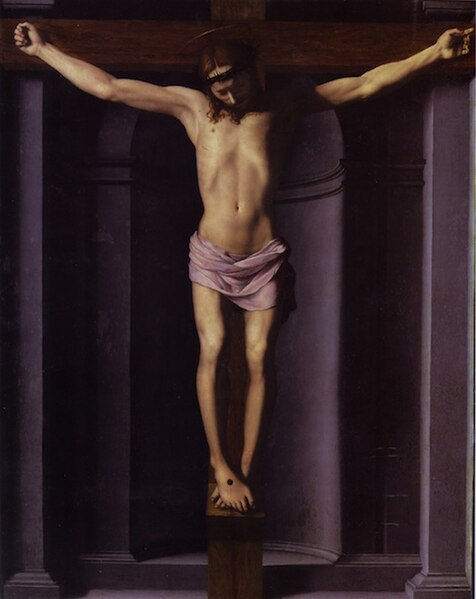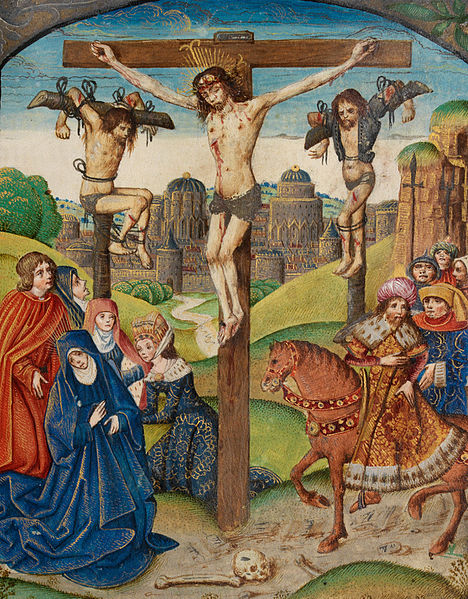The Stations of the Cross or the Way of the Cross, also known as the Way of Sorrows or the Via Crucis, are a series of images depicting Jesus Christ on the day of his crucifixion and accompanying prayers. The stations grew out of imitations of the Via Dolorosa in Jerusalem, which is a traditional processional route symbolising the path Jesus walked to Mount Calvary. The objective of the stations is to help the Christian faithful to make a spiritual pilgrimage through contemplation of the Passion of Christ. It has become one of the most popular devotions and the stations can be found in many Western Christian churches, including those in the Roman Catholic, Lutheran, Anglican, and Methodist traditions.
The 12th Station of the Cross: Jesus dies on the Cross – St. Raphael's Cathedral (Dubuque, Iowa)
Three chapels of Verkiai Calvary
Station of the Cross near the Shrine of Our Lady of Fátima, in Portugal
“The way of the Cross” by Gennadiy Jerszow - 14 relief images (bronze) Basilica of the Assumption of the Virgin Mary. Gdańsk, Poland
The crucifixion of Jesus was the execution by crucifixion of Jesus of Nazareth in 1st-century Judaea, most likely in AD 30 or AD 33. It is described in the four canonical gospels, referred to in the New Testament epistles, attested to by other ancient sources, and is broadly accepted as one of the events most likely to have occurred during his life. There is no consensus among historians on the details.
Christ Crucified (c. 1632) by Diego Velázquez
A depiction of the Raising of the Cross, by Sebastiano Mazzoni, 17th century, Ca' Rezzonico
Bronzino's depiction of the crucifixion with three nails, no ropes, and a hypopodium standing support, c. 1545
Christ on the Cross between two thieves. Illumination from the Vaux Passional, 16th century








